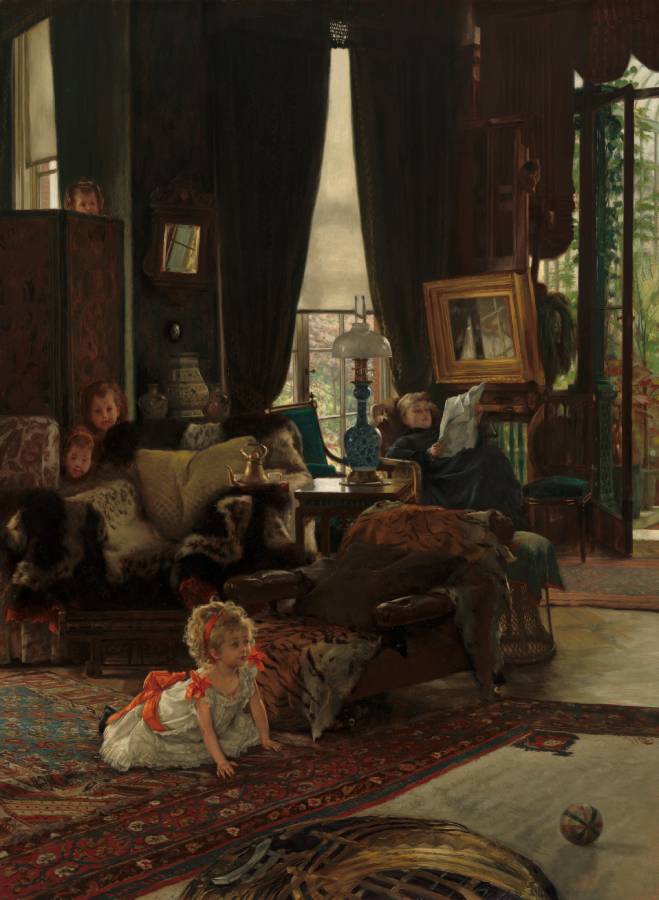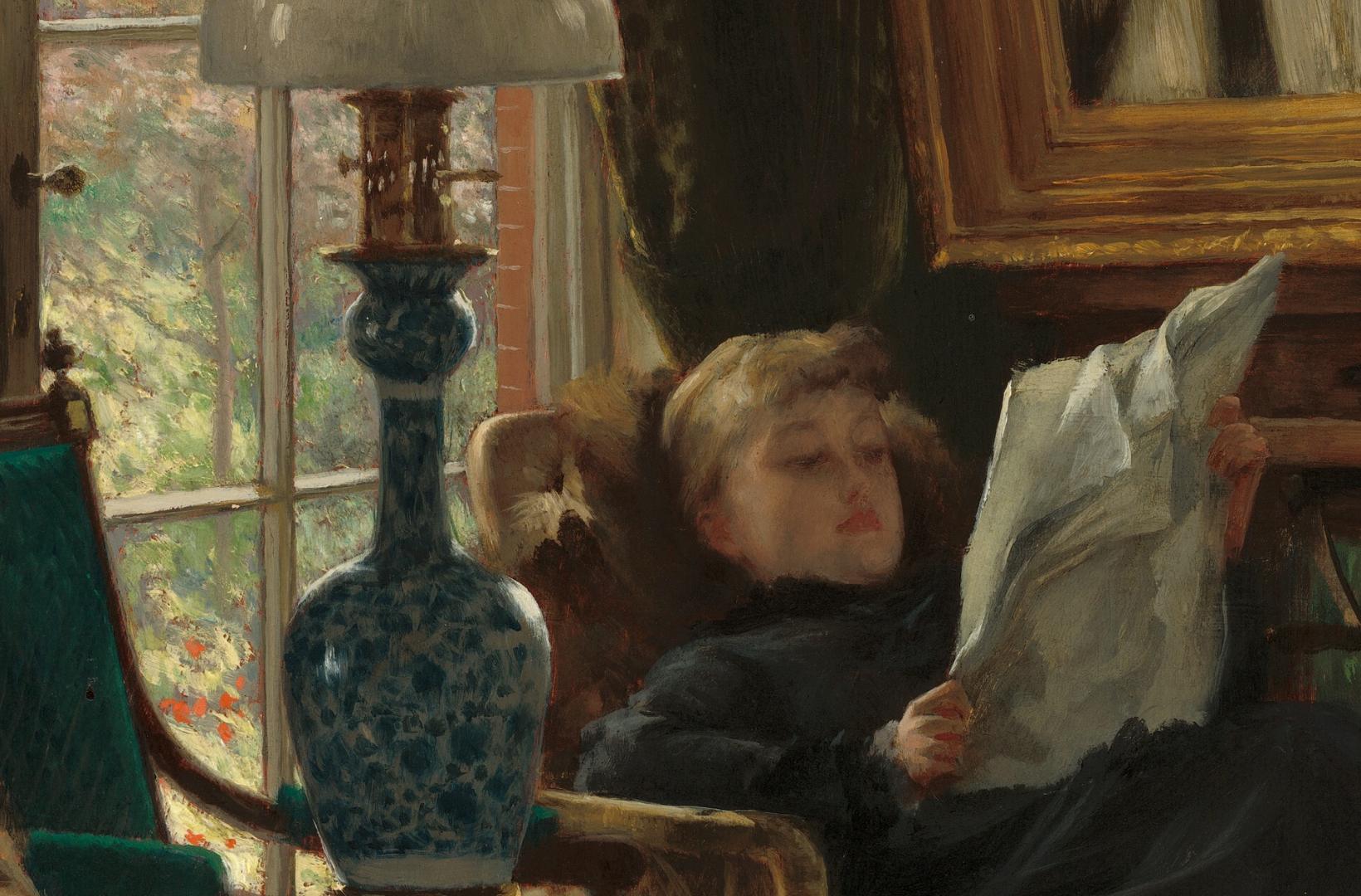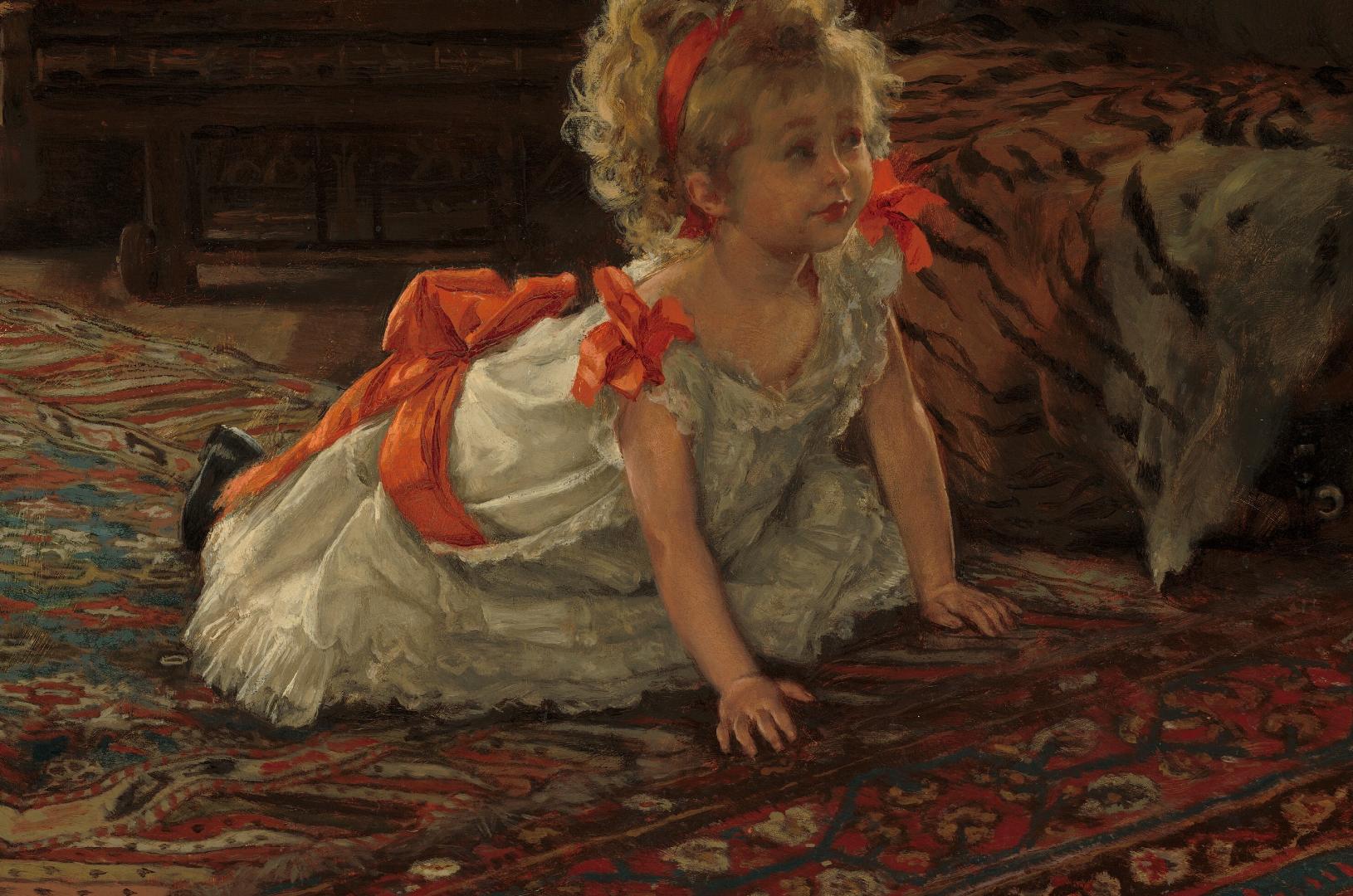Tissot, James (1836-1902)
Cache-cache (Hide and Seek)
c.1877
Oil on wood, 73.4 x 53.9 cm
National Gallery of Art, Washington
In early 1874 Degas wrote, “Look here, my dear Tissot. . . you positively must exhibit at the Boulevard [in the first impressionist exhibition]. . . Exhibit. Be of your country and with your friends.” Degas and Tissot, who met as students during the late 1850s, stayed in close communication even after Tissot fled to London in 1871 to avoid punishment for activities in the abortive Commune. Arguing that the benefits of declaring his allegiance to French art outweighed the potential harm it might cause among Tissot‘s London audience, Degas urged Tissot to show with the impressionists and thereby affirm his ties to France and more particularly to Degas and realism. Although he chose not to accept the invitation, Tissot, like Degas, worked in a realist vein. Hide and Seek depicts a modern, opulently cluttered Victorian room, Tissot‘s studio. After Kathleen Newton entered his home in about 1876, Tissot focused almost exclusively on intimate, anecdotal descriptions of the activities of the secluded suburban household, depicting an idyllic world tinged by a melancholy awareness of the illness that would lead to her death in 1882. The artist’s companion reads in a corner as her nieces and daughter amuse themselves. The artist injected an atmosphere of unease into this tranquil scene by comparing the three lively faces peering toward the infant in the foreground at the left with an ashen Japanese mask hanging near Mrs. Newton in the entry to the conservatory.
A young girl whose blond curls catch the sunlight in an otherwise dim living room looks up from a kneeling position on all fours on the floor, as the faces of three other children peek over pieces of furniture behind her in this vertical painting. The children and the woman all have peachy, pale skin. The young girl’s body is angled to our right and she looks in that direction with eyebrows raised. She has a pointed nose, rounded cheeks, and her rosebud lips are closed. Her mass of blond curls is held back with a scarlet-red ribbon, and more red ribbons are tied into bows at the shoulders of her short-sleeved, white dress and around her waist. Her dress has lacy ruffles down the front and along the bottom hem. She kneels on a large rug patterned densely with burgundy-red, denim-blue, and ivory-white stylized flowers, vines, and leaves. A red, blue, and white striped ball rests on a second patterned rug in front of her, to our right. In front of the girl and along the bottom center of the painting is a round but indistinct object, like a flattened basket, that sits on or is part of the carpet. A brown’ leather chaise lounge behind the girl is covered with at least one tiger’s pelt. A wooden side table separates that chair from another overstuffed armchair covered with more furs. Next to it, a third chair with a red paisley pattern against a white background is mostly cut off by the left edge of the canvas. Almost lost in shadow, two small faces peek out from between the two leftmost chairs. Both children have rounded cheeks and they look toward the kneeling girl. The forehead and nose of a fourth child’s face peeks over tiny fingers hooked along the top of the screen behind that pair. All three have brown hair pulled back in headbands. Farther back in the room to our right, a young woman with light brown hair, wearing a dark, long-sleeved, high-necked dress, reads a newspaper with her feet propped on a footstool in the back corner. A tall window behind her, to our left, is partially covered by a sheer white shade, and a glass door on the adjoining wall, to our right, opens onto a conservatory or greenhouse filled with green plants. The windows are framed covered by moss-green curtains. More side tables, chairs, and footstools line that back space. A long-necked, blue and white lamp with a glass shade sits on the side table next to the chair with the tiger pelt, and a gold teapot with white teacups and urns sit on other tables. A small, square mirror reflects bright sunlight next to the screen and another mirror with a wide, gold frame hangs above the reading woman and reflects the window panes behind her. The artist signed the work near the lower right corner, “J.J. Tissot.” (NGA)


